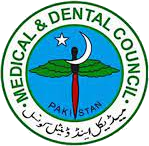Submissions
Submission Preparation Checklist
As part of the submission process, authors are required to check off their submission's compliance with all of the following items, and submissions may be returned to authors that do not adhere to these guidelines.- The submission has not been previously published, nor is it before another journal for consideration.
- The submission file is in Microsoft Word document.
- The text is single-spaced and uses a 12-point font.
- All illustrations, figures, and tables are placed within the text at the appropriate points, rather than at the end.
- The text adheres to the stylistic and bibliographic requirements outlined in the Author Guidelines.
- Vancouver style of referencing is used.
- Where available, DOI for the references have been provided.
Copyright Notice
Re-use guidelines for open access content
When uploading, disseminating or repurposing Open Access publications, the journal should be clearly identified as the original source and proper citation information provided. In addition to the Version of Record (final published version), authors should deposit the URL/DOI of their published article in any repository.
Repository Policy for submitted, accepted and online version of manuscript
The Journal of University College of Medicine and Dentistry is an Open Access journal where authors are entitled to make their article publicly available according to the terms of the CC BY license. Authors who have published under a CC BY-4.0 license may share and distribute their articles on non-commercial websites and repositories. There is no embargo period during the whole process from submission to publication, or after publication.
Re-use guidelines for open access content
When uploading, disseminating or repurposing Open Access publications, the journal should be clearly identified as the original source and proper citation information provided. In addition to the Version of Record (final published version), authors should deposit the URL/DOI of their published article in any repository.
Repository Policy for submitted, accepted and online version of manuscript
The original submitted version of an article is the author's version that has not been peer reviewed and at this stage it can be shared online as a preprint without mentioning JUCMD as the source of submission. When an article is peer reviewed and accepted for publication in the print format, the author will be required to clearly identify the journal as the original source and proper citation information provided.
Accepted for publication articles should not be made available online as a pre-print version without identifying JUCMD as the source of acceptance for publication by the author . Publication will allow the author to retain the copyright and share the article under the agreement described in the licensing rights with creative commons, with appropriate attribution to JUCMD. Creative Commons attribution license CC BY 4.0 is applied to articles published in JUCMD: https://creativecommons.org/licenses/by/4.0/ , or in certain cases it can be stated that all articles and content there in are published under creative commons license unless stated otherwise. On publication, the author may link to the Version of Record using the DOI or can post the article PDF on website and repositories according to CC-BY license guidelines.
Authors retain copyright and grant the journal right of first publication with the work simultaneously licensed under a Creative Commons Attribution 4.0 International License that allows others to share the work with an acknowledgment of the work's authorship and initial publication in this journal.
Authors are able to enter into separate, additional contractual arrangements for the non-exclusive distribution of the journal's published version of the work (e.g., post it to an institutional repository, in a journal or publish it in a book), with an acknowledgment of its initial publication in this journal.
Privacy Statement
The names and email addresses entered in this journal site will be used exclusively for the stated purposes of this journal and will not be made available for any other purpose or to any other party.






